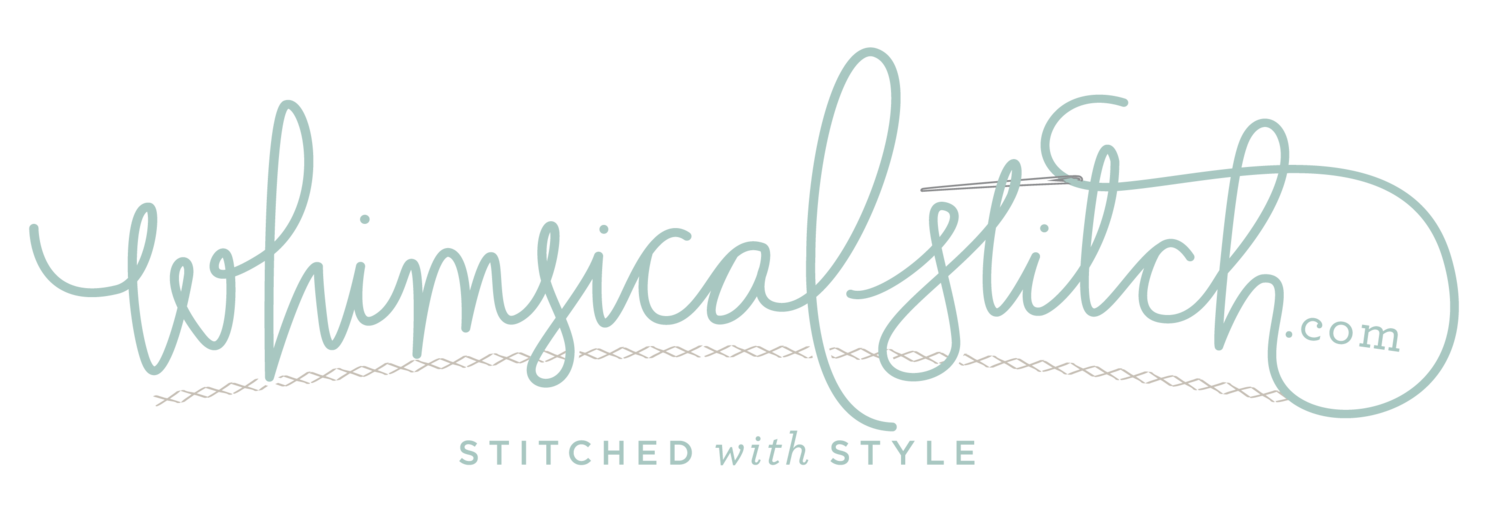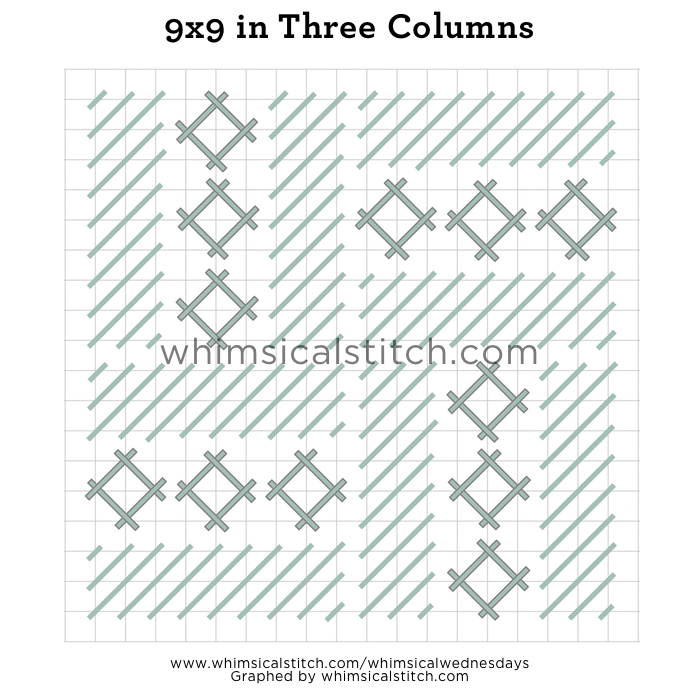With no intent, this week continues last week's theme of connections. We talked about connected diamonds last week and this week morphs into connected squares.
So, funny thing happened on way to this post. I diagrammed it from memory yet the stitched sample on Instagram reminds me how flexible this stitch is.
The diagonal connections between the squares on the diagram are over two rows. The connections on stitched sample are over three rows. Both are correct! Adjust according to the area you are filling. Over four rows is great for a larger space, especially with shading, while over two is great for a smaller space.
You may also notice the stitched sample has bling inside the squares. Those are hotfix Swarovski crystals and are fantastic accents for needlepoint. You may also attach a bead (over two rows on the vertical or horizontal). I love bling and I especially love contrasting bling, so have fun with accents when you use this stitch.
This stitch diagram, along with other #whimsicalwednesday and #smallspacesunday stitch diagrams, can also be found on www.pinterest.com/whimsicalstitch/whimsicalwednesday.
Be sure to follow whimsicalstitch.com on Facebook, Pinterest, Instagram, and Twitter.
If you like what you see on this blog, want to learn very creative decorative stitches, and how to put them all together, whimsicalstitch.com sells stitch guides for seasonal Melissa Shirley designs. 20 guides are currently available and more are in the pipeline.
Enjoy!



































